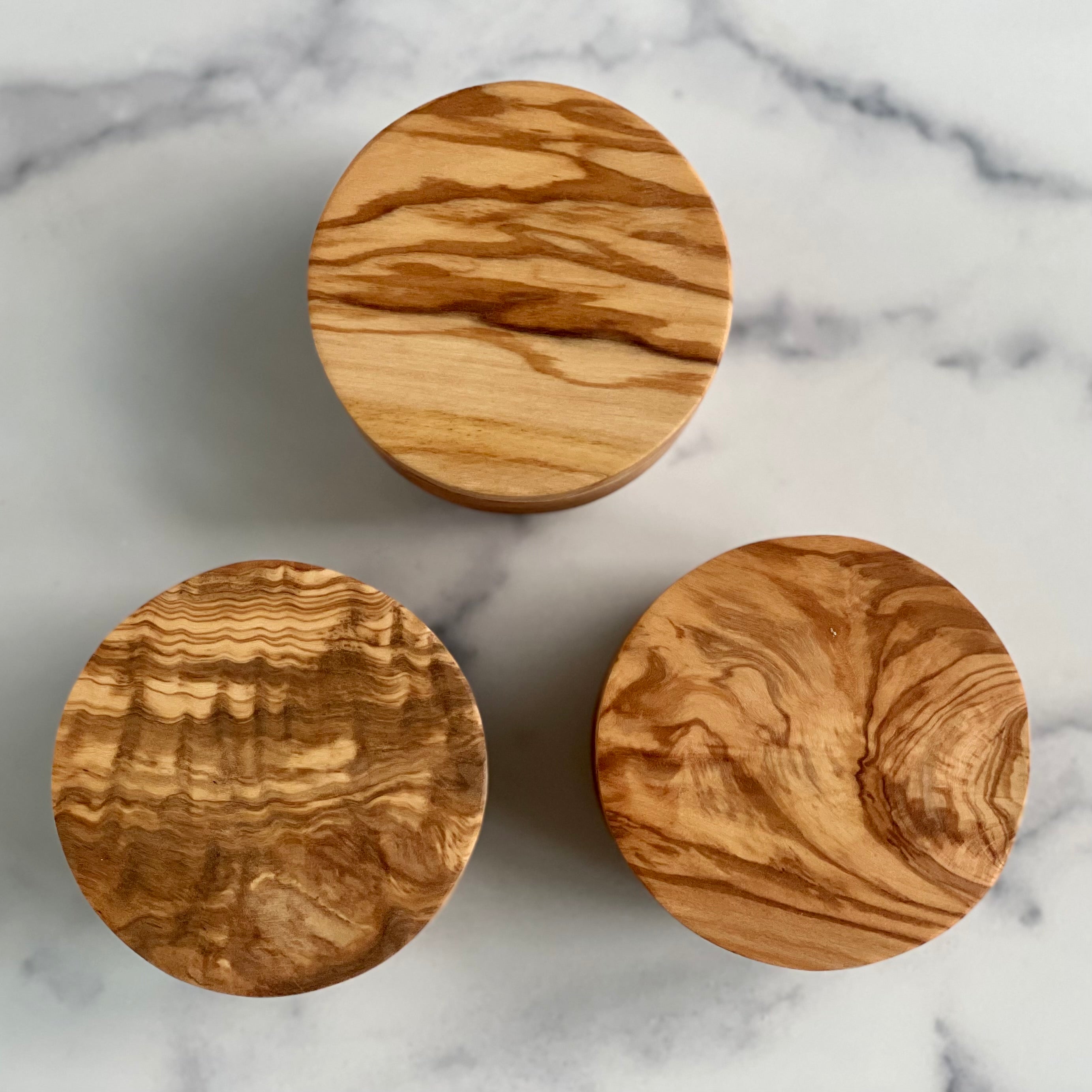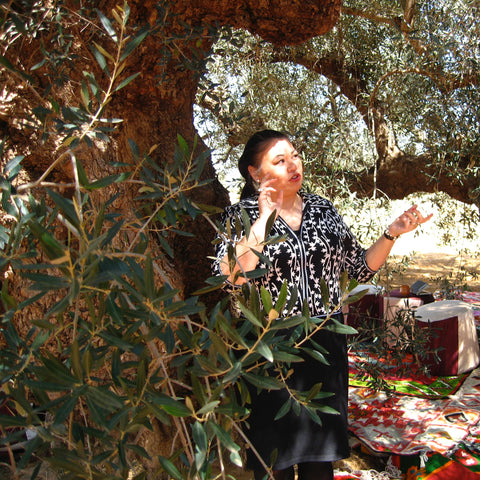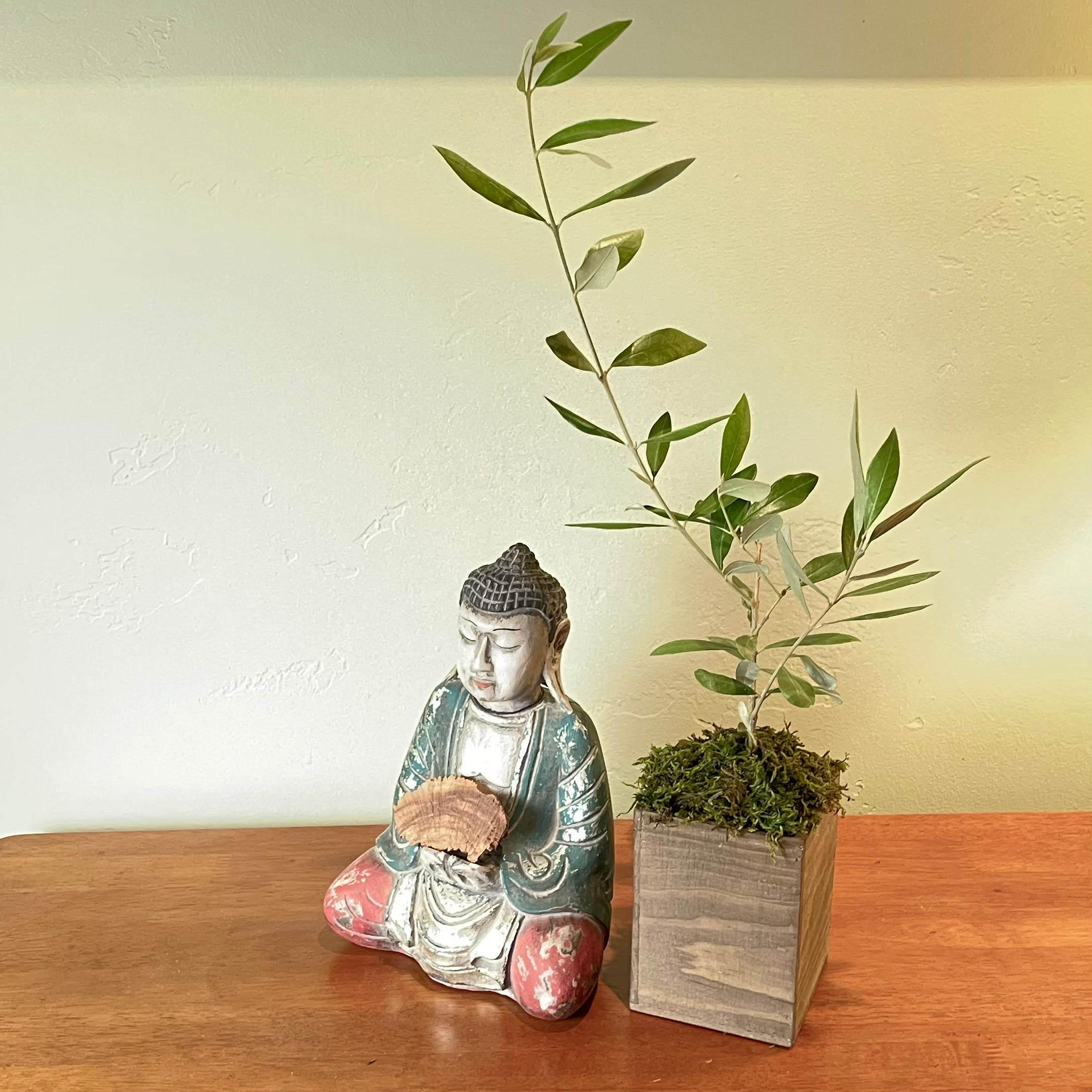
The Beauty of Olivewood
First published 17 May 2021, Updated 23 March 2024
The beauty of olivewood is due, in part, to the fact that it is slow growing, often in harsh low-water conditions. Being slow growers, the wood that these trees yield is hard, durable, and well suited for kitchen utensils. Beyond functional durability, this wood also has a distinctive and beautiful grain. Here is some general information; I'll post a separate essay on how to best care for it.
The Source
Healthy olive trees, whether intended for olive oil or table olives, aren't harvested for lumber because olive fruit is a valuable crop. Although large pieces of wood can be harvested from storm-damaged trees, most small kitchen and serving pieces are from large pruned branches, and pruning is an important annual part of orchard maintenance.
I source from two different suppliers who work with olive farms in North Africa where the tree's long history there, along with the Sahara Desert's harsh conditions, create ample opportunities for trade in interesting and beautifully figured wood. Tunisia alone boasts over 82 million olive trees, and when I visited the heart of olive country there in 2010 I saw tens of thousands of massive trees planted 28 x 28 meters apart. That's 91'x91' for you non-metric folks, and three times more space than given to traditional European or old California table olive orchards. Around here, table olive orchards are set more closely together at 30'x30' or 28'x28', and when planting olive trees, 28'x28' is commonly considered "wide spacing". (*)


All of this information is coming to a point. What I learned on this visit is that Tunisia's low population density in a vast landscape, along with the scarcity of water, means farmers are able to give each tree a significant amount of land from which to draw ground water. It also means that these trees grow to a massive height as well as develop a generous root system and canopy.
Olives can only produce fruit on new wood, and in these desert conditions all harvesting for the big trees is done by hand on tall ladders. I share these two facts about growing conditions and cultivation practices because pruning, in these instances, sometimes means using a chainsaw to take big branches. It is not the way you might prune at home with loppers or a pruning saw, and this will help you understand that trees do not have to be felled to make boards, bowls, and spoons.
Taking big branches from time to time means keeping the tree shape balanced, keeping the center open to sunlight, maintaining safety and accessibility for workers, and producing more olives. It also means that the pruned wood can be repurposed for useful and beautiful things.
The Look
Olivewood's heartwood is cream-colored or light yellow-brown with contrasting streaks of red-brown, dark brown, or even black. I've observed that more boards seem to be made from straight grain wood these days than 25 years ago, however, sometimes we're fortunate to receive a shipment with curly, wavy, burled, or a wild (extreme burl or irregular) grain patterns. These unusual expressions in the wood are my favorite. Unfortunately, we're not able to choose what is shipped to us, nor do we have a method to hand select from our stock what ships to you. I can say, however, that each piece is unique and lovely in its own way.
Closing Thoughts
Back in the early 1990s I was the "cook's tools" buyer at Williams-Sonoma, so developed a strong point of view about the care of wood (and knives) as I had close working relationships with premium manufacturers who devoted their careers to thinking about the best way to do things. At that time, polyethylene (HDPE) boards were coming into vogue, and we sold quite a few.
Although those poly boards were popular, my wood suppliers shared an insight which has stayed with me all these years: wood has the ability to trap and kill bacteria within minutes. I found a 2014 article here from North Carolina State University (quoting UC Davis), which backs this old memory; olivewood is practical because it is hygienic as well as beautiful. I believe that healthy foods should be delicious and functional things should be beautiful, and that both should be well cared for and that they'll care for you. Here is a link to another short essay with my thoughts as to the care of olivewood.
- Liz
--------------------------
(*) Note regarding spacing: "medium" density in California today might be 12' x 20', which is how our new (2023) olive orchard is planned, or might be as close as 8'x16'. "Super High density" can be achieved at an astounding 4'x12' spacing, however, only possible with a handful of special olive varieties, such as arbequina, as well as a commitment to almost 100% mechanization. SHD is a tremendous difference from the other examples given from Europe and North Africa, and one which is increasingly popular to reduce labor and land costs in highly developed areas.






